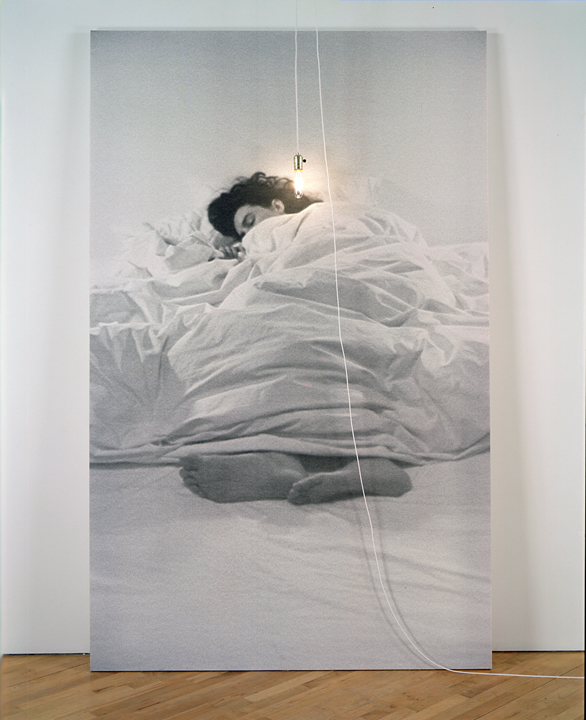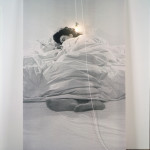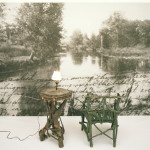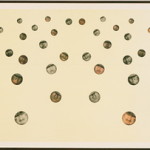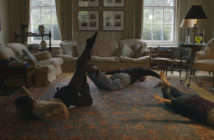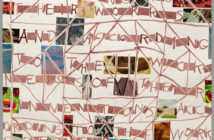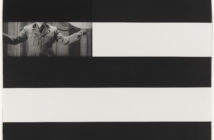Annette Lemieux needs little introduction to anyone paying attention to contemporary art over the last three decades or so. Her work can be found in the permanent collections of Metropolitan Museum of Art, the Whitney Museum, and the Museum of Modern Art, to name just a few. A mid-career retrospective of her work will open in October at the Krannert Art Museum before traveling to the Worcester Art Museum. We spoke recently.
RM: The prospect of a retrospective is interesting. How does being tugged back in time change your approach to current work? Is looking in two directions at once a distraction?
AL: There is no time to exhale or to be pulled back in time until the show is finished. I am sure this will happen when I'm in the presence of the work again. It will be like seeing old friends.
RM: We tend to accept our old friends unconditionally, warts and all. Looking back at your earlier work have you come upon something that you might do differently now? Or more to the point, found something present that was overlooked at the time?
AL: In some of my earlier work I approached the ideas coming from a painter's perspective and wasn't ready to approach things in a more purely conceptual, material way. But that's O.K. I think the work holds up. Now, over the last several years I think that I am held back as a painter/object maker and in retrospect could approach the ideas differently.
RM: Interesting. Artforum recently said of your work that it was "nostalgic". And that without any negative connotation. So this looking backward in time, regardless of the retrospective, is apt thematically, even for your current work?
AL: I don't see time or going back in time when using images from the past. I see rather a situation in the images that is current and present in our time. We haven't changed that much, maybe the clothes and hairdo's, but we remain the same, in the same situations and struggles.
RM: Nicely put. But there are subtle differences, norms change, technology advances. In your view then our "human qualities" are distinct and more or less unchanged, would that be fair to say?
AL: Yes, that would be fair to say - and we can't get away with saying "It's in the mail" anymore. I find the prospect of slowing down the viewer an interesting and challenging idea. I did this to some degree in my "Come Join In" installation at the Armory Show in 2008. That was accomplished by serving apple pie and unpasturized milk, served by my milkmaid at an old farm table with chairs. There should be more comfortable chairs in galleries and museums to allow you to stop and ponder. Maybe serve cordials too.
RM: And maybe that is what I was getting at. The world has sped up to such a degree that the notion of sitting and pondering things is difficult, if not impossible. I imagine that within seconds I could read about "Come Join In" in several places and in three different languages. Isn't that somewhat ironic given your intent? And, perhaps, frustrating seeing as most of it is out of your (the artist's) control?
AL: Yes, when the darlings leave the studio and after the installation, when the show opens, they are out of my control. It is kind of like having children I guess - just a fact of life.
RM: You make it seem uncomplicated, so straightforward. A lot of artists are neurotic in that regard—never wanting to let go. Very controlling parents, if you will...
AL: I'm often thinking of the next work while finishing something. Maybe that helps.
RM: Changing the subject a bit, I dug up an old interview where when asked about the tension between formal and conceptual approaches you dismissed the idea, saying you found that a lot of different approaches make the work more interesting. Is it difficult sometimes editing out things, or is that the best part, having an abundance of ways to approach a work?
AL: Yes, I do have a lot of different approaches. But for a particular idea, there is usually only one choice. The idea often dictates the choice. I edit during the thinking, researching and planning part, long before the work physically begins. Humor is becoming more and more important to me in my life and work. One of my favorite pieces that I saw in the 80's or 90's was Bruce Nauman's video of a clown struggling to take a shit. I stayed in the gallery for a half hour or more looking and laughing. It was one of the best art experiences I had.
RM: What was it about the Nauman piece, the humor or audacity, or some other combination that struck you? Then again, it's a struggle we all can relate to.
AL: It was the gift of laughter, the best medicine as they say...
RM: Looking back, you recalled Nauman's piece. Is there anything recently that reset your levels, a work that just knocked you down?
AL: Haven't seen a lot this past year - have to get out more. But I have a copy of Carl Jung's Red Book. I wish I saw the original book when it was on view in New York. Very crazy and beautiful, very far out-there paintings...
RM: Is painting your first love?
AL: It was.
RM: Could you elaborate?
AL: In 1983, I was getting frustrated with the limitations of the rectangle. So I began making paintings that had objects in front of them or to their left or right. These objects were from life. I was interested in bringing the viewer into the space of the work physically and conceptually. Then I had a bad accident and couldn't work for 6 months or more. After I recuperated I began using photography - found or my own, manipulated objects, created text works, etc...
RM: Not a departure but a break through of sorts?
AL: Yes a break through and still trying to break through.
RM: That's a fitting way to conclude this, I think, still trying to break through...
- Annette Lemieux, Sleep Interrupted, Water-based ink on canvas, light fixture, 1991.
- Annette Lemieux, The Great Outdoors, Water-based ink on canvas, Adirondack chair, table, lamp, 1989
- Annette Lemieux, Stolen Faces, Lithographs, 1991
The Krannert Art Museum
The Worcester Art Museum
"The Strange Life of Objects: The Art of Annette Lemieux" is on view October 29, 2010 through January 2, 2011 at The Krannert Art Museum.

